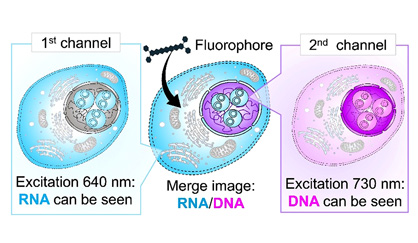Successful Visualization of the Odor Discrimination Process in an AI-Assisted Olfactory Sensor
— Guides the Design of Optimal Receptor Materials for Specific Odorant Molecules —2025.09.11
NIMS (National Institute for Materials Science)
NIMS has been developing chemical sensors as a key component of the artificial olfaction technology (olfactory sensors), with the aim of putting this technology into practical use. In this study, explainable AI (XAI) was used to reveal how chemical sensors discriminate among various odorant molecules. The findings may help guide the selection of receptor materials for developing high-performance chemical sensors capable of detecting odorant molecules. The achievement is expected not only to improve the performance of artificial olfaction but also to advance understanding of human olfactory mechanisms. This research was published online in ACS Applied Materials & Interfaces on September 9, 2025.
Abstract
Background
However, current AI-assisted artificial olfaction has yet to reach practical application due to the limited sensitivity and discrimination accuracy of existing chemical sensors. Addressing this challenge will require higher-performance chemical sensors, particularly through the development of receptor materials capable of more effectively detecting odorant molecules.
In conventional artificial olfaction systems, AI has classified and identified odorant molecules without a full understanding of which receptor materials respond to which molecules. Revealing the response characteristics of specific receptor materials will enable the development of optimal materials for discriminating target odorants and the selection of receptor materials that achieve more accurate odor discrimination.
Key Findings
The analysis revealed that the key portions of sensor responses used for identification vary depending on the specific combinations of odorant molecules and receptor materials. For example, receptor materials containing aromatic rings were found to be important for identifying aromatic molecules.
This approach is expected to enable efficient selection of receptor materials tailored to target odorant molecules and guide the development of materials capable of identifying molecules that are otherwise difficult to detect. In addition, by revealing not only how the AI discriminates but also on what basis it makes predictions, XAI may offer important clues to understanding the mechanisms of odors and human olfaction.

Figure. Visualization of the odor discrimination process by an XAI-assisted olfactory sensor. Depending on the odorant molecule, the AI identifies the most responsive receptor materials and highlights the key sections of sensing signal curves used for discrimination.
Future Outlook
Other Information
- This project was carried out by Yota Fukui (Trainee, Center for Basic Research on Materials (CBRM), NIMS at the time of this project), Koji Tsuda (Invited Researcher, CBRM, NIMS), Ryo Tamura (Team Leader, CBRM, NIMS), Kosuke Minami (Principal Researcher, Research Center for Macromolecules and Biomaterials (RCMB), NIMS) and Genki Yoshikawa (Group Leader, RCMB, NIMS).
- This research was published online in ACS Applied Materials & Interfaces on September 9, 2025.
Published Paper
Authors : Yota Fukui, Kosuke Minami, Genki Yoshikawa, Koji Tsuda, and Ryo Tamura
Journal : ACS Applied Materials & Interfaces
DOI : 10.1021/acsami.5c13990
Publication Date : September 9, 2025
Contact information
Regarding This Research
Team Leader, Data-driven Algorithm Team, Data-driven Materials Research Field,
Center for Basic Research on Materials
National Institute for Materials Science
TEL: +81-29-860-4948
Principal Researcher, Olfactory Sensors Group, Biomaterials Field,
Research Center for Macromolecules and Biomaterials
National Institute for Materials Science
TEL: +81-29-851-4571
Group Leader, Olfactory Sensors Group, Biomaterials Field,
Research Center for Macromolecules and Biomaterials
National Institute for Materials Science
TEL: +81-29- 860-4749
Media Inquiries
Division of International Collaborations and Public Relations
National Institute for Materials Science
1-2-1 Sengen, Tsukuba, Ibaraki 305-0047, Japan
TEL: +81-29-859-2026
FAX: +81-29-859-2017
Same Keywords
-
Digitalization and Visualization of Odors Using an Odor Sensor and Machine Learning
(MSS)
2021.06.21
-
"MSS Forum" Launched to Promote the Establishment of a De Facto Standard for Olfactory IoT Sensing Systems
(MSS)
2017.10.16
-
Successful Prediction of Alcohol Contents through Smells of Liquors
(MSS)
2017.06.20



